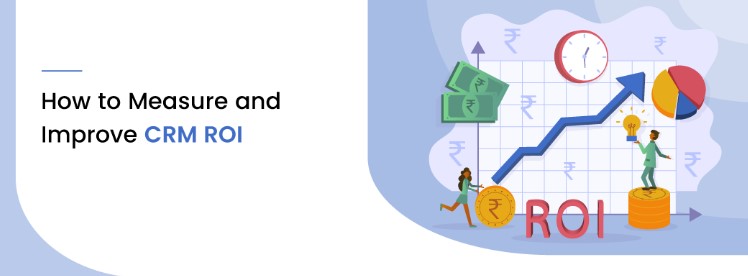One of the key benefits of using a customer relationship management (CRM) system is the ability to gather and analyze customer data. By using data analytics tools, businesses can gain valuable insights into customer behavior and preferences, and use this information to improve their CRM strategy and maximize their ROI. In this article, we will explore insights and best practices for using data analytics to maximize CRM ROI.
1. Define Your Objectives
Before diving into data analytics, it’s important to define your objectives and what you hope to achieve. Are you looking to increase sales revenue, improve customer satisfaction, or reduce churn? By defining your objectives, you can focus your data analytics efforts on the metrics that matter most to your business.
2. Gather the Right Data
To maximize your CRM ROI with data analytics, you need to gather the right data. This includes customer demographics, behavior, preferences, and feedback. By gathering this data from multiple sources, such as social media, email marketing, and customer service interactions, you can create a comprehensive view of your customers.
3. Use Data Visualization Tools
Data visualization tools like dashboards and reports can help you analyze and understand your customer data. By presenting data in a visual format, you can identify patterns and trends that might not be immediately obvious in a spreadsheet or database. This can help you make informed decisions about your CRM strategy.
4. Implement Predictive Analytics
Predictive analytics can help businesses forecast future customer behavior and identify areas for improvement in their CRM strategy. By using machine learning algorithms to analyze customer data, businesses can predict which customers are most likely to churn, which products are most likely to sell, and which marketing campaigns are most likely to succeed.
5. Test and Iterate
To ensure that your CRM strategy is effective, it’s important to test and iterate your approach based on data analytics insights. This includes A/B testing marketing campaigns, experimenting with new customer service approaches, and adjusting your sales strategy based on customer behavior.
Here are some best practices for maximizing CRM ROI with data analytics:
- Ensure that your CRM data is accurate and up-to-date.
- Choose data analytics tools that align with your specific requirements and industry.
- Regularly analyze and adjust your CRM strategy based on data analytics insights.
- Provide comprehensive training to all employees to ensure successful adoption and use of data analytics tools.
- Establish a culture of data-driven decision-making within your organization.
In conclusion, maximizing CRM ROI with data analytics requires a strategic approach that includes defining objectives, gathering the right data, using data visualization tools, implementing predictive analytics, and testing and iterating. By following best practices for data analytics, businesses can gain valuable insights into customer behavior and preferences, improve their CRM strategy, and maximize their ROI.
Here are some FAQs related to maximizing CRM ROI with data analytics:
-
What are some common challenges businesses face when implementing data analytics for CRM?
Some common challenges businesses face when implementing data analytics for CRM include data quality issues, lack of expertise in data analytics, and difficulty integrating data from multiple sources.
-
How can businesses ensure that their data analytics approach is effective?
To ensure that their data analytics approach is effective, businesses should regularly measure and analyze success metrics like ROI, customer satisfaction, and sales growth. They should also adjust their approach based on data analytics insights and seek out new tools and technologies that can improve their data analytics capabilities.
-
What are some best practices for data visualization in CRM?
Some best practices for data visualization in CRM include using clear and concise visualizations, incorporating interactivity and drill-down functionality, and using color and design to highlight key insights.
-
What are some benefits of using predictive analytics in CRM?
Some benefits of using predictive analytics in CRM include improved sales forecasting accuracy, more personalized marketing campaigns and product recommendations, and reduced customer churn.
-
How can businesses ensure that their employees are properly trained to use data analytics tools?
Businesses can ensure that their employees are properly trained to use data analytics tools by providing comprehensive training, resources, and support. This includes regular training sessions, user guides, and access to technical support.
In conclusion, maximizing CRM ROI with data analytics requires a strategic approach that includes defining objectives, gathering the right data, using data visualization tools, implementing predictive analytics, and testing and iterating. By following best practices for data analytics, businesses can gain valuable insights into customer behavior and preferences, improve their CRM strategy, and maximize their ROI.
